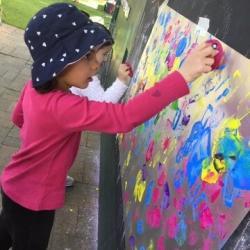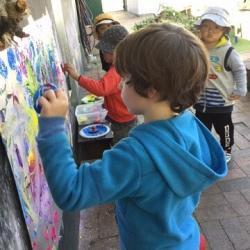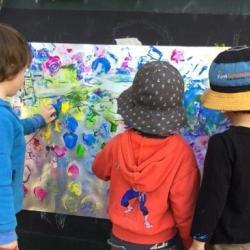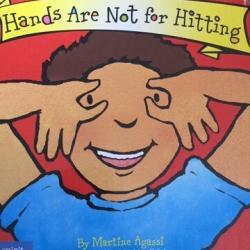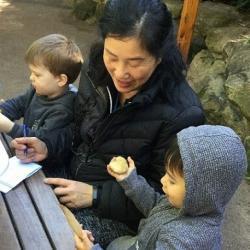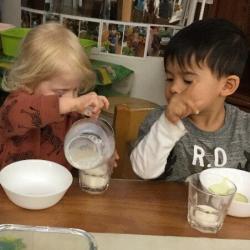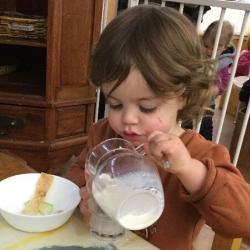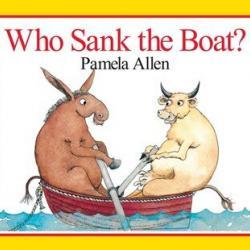Johnson House
The children in Johnson House have been really enjoying creative arts opportunities set up by their educators. They have been able to work with a range of media, and have also enjoyed working on both individual as well as collaborative art experiences. Through these experiences the children are developing many skills, including fine motor, language and social skills as they communicate effectively and work alongside, or in conjunction, with peers. Each day the children have been helping to set up the space, and offering ideas, which has helped give them a sense of ownership and pride. The continuous implementation of a range of creative arts experiences helps encourage children to be unique in what they create, and reinforces the idea of ‘process over product’, meaning that the enjoyment comes not from the end result but from the level of engagement and the ‘doing’ during the experiences.
Murray House
Infants
The educators in Murray House infants’ room have been working on guiding children’s positive interactions as the children develop friendships with their peers. The children have been showing great interest in joining others and inviting other children to their play experiences. Some of the children are confident, while others are still learning to approach from a positive perspective.
To guide children to develop skills for positive interactions, a book called ‘Hands are not for hitting’, written by Marine Agassi, was introduced to the children during gathering time. This book focuses on delivering messages about ways to develop positive relationships by being physically gentle with others. It includes simple illustrations tohelp children to understand what is meant by caring for others and understanding other people’s feeling.
When the children are asked “Are hands for hitting?” by their educators, they all respond with “No!”, and shake their heads. The educators are amazed to see the children demonstrating their understanding of the importance of being respectful towards others and developing the ability to identify fair and unfair behaviour.
Toddlers
Learning is everywhere
In Murray House toddler’s room mealtimes provide great opportunities for educators to intentionally extend and promote children’s learning. They have recently brought some new cups and jugs for the children, and at mealtimes children are encouraged to pour their own water or milk to support the development of their hand-eye coordination skills, fine motor skills, and to help them experience a sense of accomplishment. The children are excited about using the new jugs, and the educators have capitalised on this to teach the children good hygiene practices such as holding the jug by the handle rather than the spout, as well as about holding serving tongs by the handle rather than the food gripping part to minimise the spread of germs. The educators also talk with children about the importance of handwashing before eating, the nutritional value of different foods, and about making healthy food choices.
Learning through play
To reinforce the children’s emerging shape recognition skills, this week the educators made a fun learning experience for the children by combining two learning areas: cognitive and physical. Shapes were drawn on the ground and the children were encouraged to take turns to jump into the shapes. Through this activity the development of the children’s shape recognition, jumping, and turn taking skills were being fostered through one play-based learning experience.
Additionally, this week the children also learned about concepts related to sinking and floating, as well as light and heavy, through hands-on experiences. These experiences encouraged the children, individually or in collaboration with their peers, to predict, experiment, and to build their own theories about whether objects would sink or float.
Rigby House
Experimenting with size and weight
The book ‘Who sank the boat?’, by Pamela Allen, is one of Rigby House children’s favourite stories. In the story the boat slowly descends into the water as more weight is added, until it finally overturns and sinks.
The children’s interest in this story was extended by educators by implementing many floating and sinking experiment experiences. The children’s interest then turned to the size and weight of objects, and how this affects the movement of other objects.
To extend the children’s understanding of these concepts, the educators provided them with a simple balance scale experience. The children enjoyed filling a basket with objects they chose from the environment and then they experimented and explore the objects’ weight and size, cause and effect. As the children played in this experience, it was delightful to educators to hear them using mathematical language to ask questions and explain their ideas.
